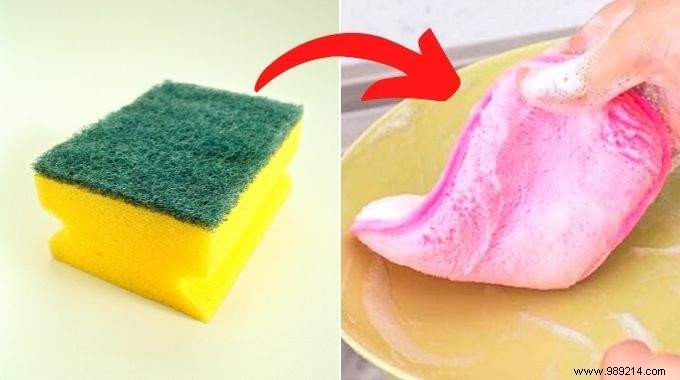
You too are tired of throwing away your sponges as soon as they are dirty ?
It's true that all this plastic that ends up in the trash is disaster for the planet!
Fortunately, there are washable and reusable eco-friendly sponges that you can reuse (almost) endlessly.
With these natural sponges, you will really and easily reduce your daily waste.
Not to mention the over-packaging and the fact that these sponges are made from petroleum...
Here are 4 natural, DIY and zero waste alternatives to replace conventional sponges when washing dishes. Watch:
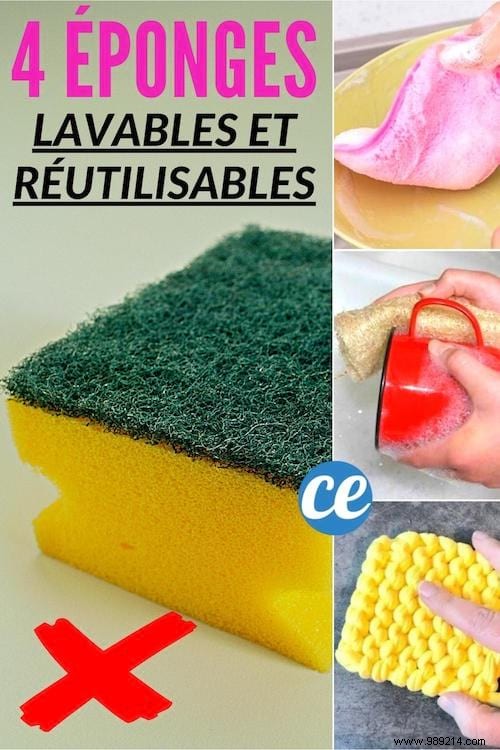
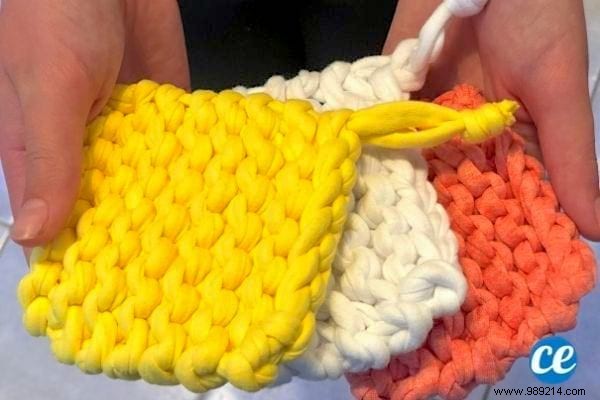
If you are already a bit aware of zero waste, you are surely familiar with Tawashi weaving.
It's a technique that comes from Japan.
It's about recycling fibers, including old tights, jeans or acrylic wool.
Then we weave them by hand or with a hook or needles.
We show you how to do it here with this easy tutorial.
A good way to combine recovery and natural cleansing.
In addition, you can give the size and thickness you want to the washable tawashi sponge.
Don't want to make your own Japanese sponge? Find ready-made ones here.
Once it is woven, it is put in the washing machine to sanitize it.
It is now ready to clean the dishes!
- Ultra resistant:lasts 10 times longer than a normal sponge
- Easy to craft
- Does not decompose
- Can be recycled depending on the fiber chosen for manufacturing
- Machine washable
- Long drying
- May be less abrasive
- Less absorbent
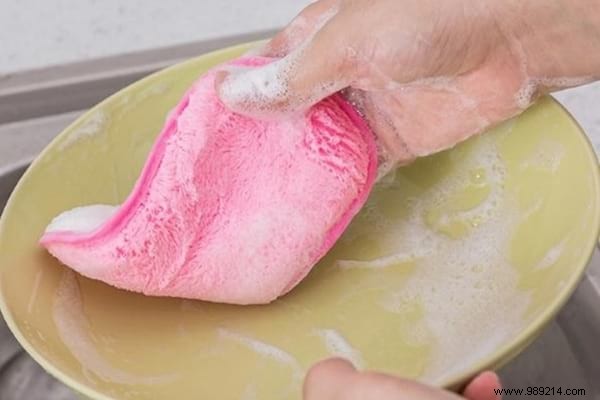
The microfiber sponge is the one that most resembles a classic sponge in its shape.
It is durable since it can be used for almost 1 year without crumbling.
There are even some with a soft side and a slightly more abrasive side.
It is perfect for even the dirtiest dishes .
And if the pan has burnt a little, soak it before a few hours in soapy water, a sponge, and voila!
That's it.
You can even put it in the washing machine regularly.
- Durability
- Gentle on fragile dishes:does not scratch
- Recyclable
- Machine washable
- Not abrasive enough
- Composition of the microfiber to be checked
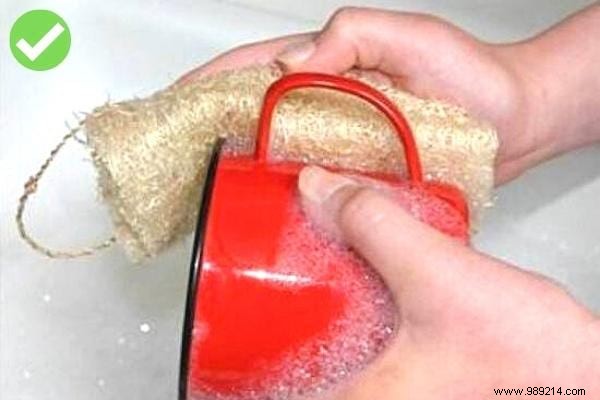
If you read us regularly, you already know the loofah (or loofah) sponge.
We even taught you how to grow them here!
It is a kind of squash that gives a very spongy fruit and is used as a sponge.
It is 100% natural and 100% recyclable.
The loofah sponge is perfect for washing dishes, as it is quite abrasive.
Rinse it well after each use and dry it well.
Its fibers being well ventilated, it dries quickly without risk of mould.
You can even use it for the body.
In short, it will find its place in all the rooms of the house!
- Biodegradable / compostable
- Natural
- Abrasive
- Not very absorbent
- Must air dry
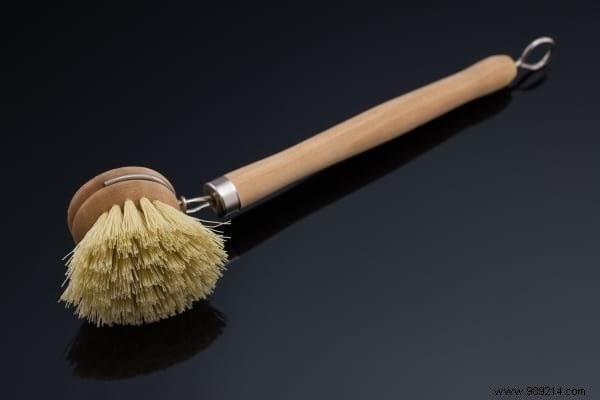
Back to our grandmothers' accessories.
The dish brush is made of a wooden handle and naturally scraping fibres.
It's perfect for loosening dirt from dishes without getting your hands dirty.
After each use, hang it up to dry.
I love this model of brush, because you can change the heads when they are damaged.
- Cleans stuck-on food well
- Avoid getting your hands in the water
- Natural and biodegradable
- The heads are interchangeable
- The wooden handle requires maintenance
Most of our "gratounette" type sponges are made up of two parts.
A yellow foam part made of petroleum-derived plastic resin (not to mention dyes).
An abrasive green part glued with a water-resistant and non-biodegradable glue.
This part releases tiny residues that pollute soil and water.
In short, it's a small ecological bomb.
There are recycled sponges you say!
It's true, and it's already a good initiative to choose them.
However, recycling plastic is really energy-intensive and polluting.
It is therefore to be avoided if you are in a 100% "green" approach.
Now that you know 4 alternatives to synthetic sponges, you have no more excuses not to use them.
After having tested these 4 ecological alternatives, my preference goes very clearly towards the microfiber sponge.
I only use that now, it's the best ecological sponge in my opinion.
Why ? Because it is the closest to classic sponges.
It has an abrasive side which is very effective. Depending on the brands, the braiding of this part is more or less in relief. The more relief it contains, the more abrasive it will be. The choice is yours.
The other side is soft and quite absorbent. Not as much as a natural sponge, but you get used to it. This side is nickel for crockery, glasses, earthenware in the bathroom.
Last big advantage in my opinion:the machine washable aspect. I bought a set of 6 sponges. I use them for 3 or 4 days, and presto, in the washing machine!
Despite this shock treatment, they have not moved for 6 months:not damaged, not relaxed and still as effective.